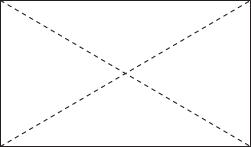Teaching the Common Core Math Standards With Hands-On Activities, Grades 3-5 (92 page)
Read Teaching the Common Core Math Standards With Hands-On Activities, Grades 3-5 Online
Authors: Judith A. Muschla,Gary Robert Muschla,Erin Muschla-Berry
Tags: #Education, #Teaching Methods & Materials, #Mathematics, #General

BOOK: Teaching the Common Core Math Standards With Hands-On Activities, Grades 3-5
7.75Mb size Format: txt, pdf, ePub
You have just plotted two points in the coordinate plane!
Geometry: 5.G.2
“Graph points on the coordinate plane to solve real-world and mathematical problems.”
2. “Represent real-world and mathematical problems by graphing points in the first quadrant of the coordinate plane, and interpret coordinate values of points in the context of the situation.”
Background
The coordinate plane is formed by two perpendicular lines that divide the plane into four regions, called quadrants. In the first quadrant, the coordinates of the ordered pairs are positive numbers. The first quadrant of the coordinate plane serves as the basis for many graphs.
Activity: Graphing Relationships
Students will graph ordered pairs that show the relationship between the number of sides of two-dimensional figures and the number of their diagonals.
Materials
Graph paper; reproducible, “Figures and Diagonals,” for each student.
Procedure
1.
Review the coordinate plane with your students and focus their attention on the first quadrant. Note the-axis,
-axis, and the origin. Also note that each point can be represented by an ordered pair, (
,
).
2.
Explain that students are to graph the relationship between the number of sides of two-dimensional figures and the number of their diagonals. If necessary explain that a diagonal is a line segment drawn from one vertex to another non-adjacent vertex. Present the example of the rectangle below. It has four sides and two diagonals.
The number of sides can be represented by the-coordinate, and the number of diagonals can be represented by the
-coordinate. The number of sides and diagonals for a rectangle can be represented as (4, 2).
3.
Distribute copies of the reproducible. Explain that it contains five figures. Note that each has a different number of sides and a different number of diagonals. Students are to graph the relationship between the number of sides and the number of diagonals of each figure, representing the number of sides by the-coordinate and the number of diagonals by the
-coordinate.
Closure
Review students' graphs. Ask for volunteers to explain what each ordered pair represents. (The-coordinate represents the number of sides of a figure; the
-coordinate represents the number of diagonals of a figure.)
Other books
Beatles' Let It Be (33 1/3) by Matteo, Steve
Liberty's Torch: The Great Adventure to Build the Statue of Liberty by Elizabeth Mitchell
Violetas para Olivia by Julia Montejo
Pour Your Heart Into It by Howard Schultz
The Dawn of the Raven episode 17 by J.L. Blackthorne
Dirty Kisses by Addison Moore
The Last King of Lydia by Tim Leach
Sex, Murder and a Double Latte by Kyra Davis
Dexter the Tough by Margaret Peterson Haddix
Colorado Dawn by Erica Vetsch

